Mozambique: Licungo University delivers computers under 'One Student, One Laptop' program
Mozambique: Kidnapped businessman found dead; Russian ship off Beira; inequality now dangerous – By Joseph Hanlon

Image: VOA News
In this issue
- Kidnapped businessman found dead
- Russian ship off Beira; China growth
Reports & studies
- Poverty & inequality rising to ‘dangerous’ levels
- Rice producers cannot compete with imports
- Artisanal gold mining
Kidnapped businessman found dead
Businessman Hayyum Ali Mamade was found dead on 26 December. He had been kidnapped on 14 December. His family were contacted and told he was ill and could be collected at a certain spot, but when the family arrived he was already dead. (Carta de Moçambique 27 Dec) A video of the 30 second armed kidnap is on https://bit.ly/Moz-kidnap.
Hayyum Ali Mamade ran the best ice cream shop in Maputo, Vanilla Gelado, and he was kidnapped when he was sitting in front of his recently opened branch in Matola. He also owned the Kids R Us shops in Maputo and Matola.
There were at least 12 kidnappings last year, and over 100 in the past decade. At least $35 mn in ransoms was paid last year, according to the Vice President of the Confederation of Mozambican Economic Associations (CTA), Prakash Prehlad.
Hayyum Ali Mamade’s death is at least the fourth kidnapping related death. In 2013, a 13-year-old boy, Abdul Rashid, was murdered by kidnappers. In 2014 Dinis Silica, a judge appointed to investigate the kidnappings, was gunned down. In 2015 a bystander was killed in a gunfight between kidnappers and a security guard.
The economic impact is also clear. When I am in Maputo I often walk past the gutted and abandoned Andalucia Hotel; work never resumed after the 2012 kidnap of A. Cadire and G. Sattar of the Sonil group who were rehabilitating the hotel. Similarly Carlos Camurdine, kidnapped in 2019, moved to Lisbon where he bought a hotel.
- Russian ship off Beira, as China & Russia increase their presence
The Russian cargo vessel Lady R is currently at anchor off Beira having sailed from the South Africa Naval Base at Simon’s Town on 9 December, where it apparently loaded and unloaded cargo at night during blackouts (load-shedding). Commercial cargo ships do not normally go to naval bases.
Nothing has been said officially, but South African Democratic Alliance (DA) shadow defence and military veterans minister, Kobus Marais, investigated and he concludes that the Lady R was delivering materiel, probably ammunition, for SANDF Special Forces ordered by the government agency, Armscor. It is a longstanding order, outstanding since pre-COVID-19 restrictions, probably intended for older equipment that came from former Soviet Union countries. The Lady R is sanctioned by the US Treasury Department for apparent involvement in the ongoing Russia/Ukraine conflict. (DefenceWeb 4, 3 Jan, 13, 9 Dec)
China, Russia and South Africa will conduct a joint naval exercise 17-24 February on South Africa’s east coast near Durban and Richards Bay, close to Mozambique. It is called Exercise Mosi (smoke), and a similar joint naval exercise was held off the Cape of Good Hope in 2019.
Meanwhile CNOOC (Chinese National Offshore Oil Company) has been award five exploration blocks in the most recent Mozambique licensing round. Three are offshore of Angoche, Nampula, and two are offshore of Inhambane near the mouth of the Save River. The China National Petroleum Corporation (CNPC) holds 20% of area 4 off the coast of Cabo Delgado, where LNG shipments from a floating platform began late last year. The two main owners of area 4 are ENI and ExxonMobil with 25% each.
China has become the fourth largest foreign investor in Portugal. The state-owned China Communications Construction Company (CCCC) recently took a controlling interest in Mota-Engel, the largest Portuguese construction company which also is largest in Mozambique. It is involved in construction relating to the Cabo Delgado LNG production facility, mining, and Maputo apartment blocks. Most recently it has been involved in constructing wharf and unloading facilities in Palma and Afungi.
The Fosum group is the biggest shareholder in Portugal’s largest bank, Millennium bcp, with 29.95%; Millennium bcp owns 66.7% of Millennium bim, the largest bank in Mozambique. China Three Gorges (CTG) is the largest shareholder in EDP Energias de Portugal with 20.22%. EDP is a leader in renewable energy and has projects in Mozambique.
The first flooding of the rainy season is occurring in Maputo and Gaza provinces, on the Maputo, Limpopo and Incomati rivers. Fields and roads close to the rivers are flooded. In part this is caused by South Africa dumping water from dams which are already over 80% full. Heavy rain and strong winds are predicted tomorrow (Friday) for this zone. Early heavy rains in Nampula have already destroyed more than 1000 houses.
FEWS (Famine Early Warning System, 28 Dec) reports “Across southern, central, and most of northern Mozambique, cumulative rainfall is average to above average. The timely start and good rainfall are supporting agricultural labor opportunities and planting across the country.” The only exceptions are the far north and northern coastal areas, where the rains have not yet started. Dry weather has also allowed fighting to continue in Cabo Delgado.
Malawi’s cholera outbreak had spread to Niassa by mid-December, with 337 infected and 7 deaths. In Malawi 600 have died and there have been 18,000 cases; the opening of some schools has been delayed. (Al Jazeera 2 Jan)
- Reports and research
The end of the year always brings a flood of reports, and in January we will present a few of them.
- Poverty & inequality rising to ‘dangerous’ levels; Cabo Delgado poorest province
Poverty and inequality are rising to a “dangerous” levels, according to a study “The evolution of inequality in Mozambique” published by Wider in December. Most Mozambicans are no better off than they were in 1996, and the bottom 10% is much worse off. Only the top 20% is better off than they were 25 years ago. Inequality and poverty have increased particularly dramatically since 2008.
Cabo Delgado is now the poorest province, with the first graph below showing a dramatic fall in consumption since 2014 – exactly the resource boom period. Inequality is shown by comparing Cabo Delgado consumption levels to those of Maputo city, in the second graph.
Data is based on five household budget surveys (1996/7, 2002/3, 2008/9, 2014/5 and 2019/20). The Wider study uses something it calls “real consumption”, which is the average household purchasing power needed to buy a basket of food and non-food items at the official poverty line. Thus for Cabo Delgado the average household in 1996 could buy 1.15 times the cost of food and goods at the poverty line. Conditions improved and at the peak in 2008 it could buy 1.44 times the poverty line. But in 2019, it could only buy 0.74 times the poverty line – three quarters of the minimum needed to survive poverty, and half their income of five years earlier.
More useful is the comparison to Maputo City, where incomes were rising relatively rapidly. In 1996 the average family in Cabo Delgado had 75% of the real income of a family in Maputo city, but by 2019 it was down to just 24%.
Comparison to other provinces matters as well. In 1996 Cabo Delgado had the highest real consumption outside Maputo city. In 2008 only Niassa was higher. Yet a decade later, Cabo Delgado was the poorest province in the country – all other provinces had higher real consumption.
The report concludes: “As the country embarks on the production and exporting of strategically important natural and mineral resources, an increasing trend in income inequality paired with persistently high and worsening poverty levels may be dangerous for social cohesion, economic and social stability, governance, and growth. Effective policy action is required to ensure a higher degree of inclusive growth, to avoid what used to be a fast-growing and poverty-reducing developing country becoming an even further divided, unequal, and conflict-prone state.”
The evolution of inequality in Mozambique 1996/97–2019/20 by Giulia Barletta, Maimuna Ibraimo, Vincenzo Salvucci, Enilde Sarmento, and Finn Tarp. December 2022 . WIDER Working Paper 2022/151. https://doi.org/10.35188/UNU-WIDER/2022/284-3
Rice producers cannot compete with imports according to a study of why Zambezia does not produce more rice, by Nelson Capaina of OMR (Observatório do Meio Rural; Rural Observatory https://omrmz.org/). “Overall, production and productivity remained low, with the country ranking the lowest in Southern Africa, despite having optimal agro-ecological conditions for the production of this cereal,” particularly in Zambezia. Low productivity makes production costs too high, so the local price cannot compete with imports, and in the free market minimum prices are ignored. Attempts to raise productivity have been inconsistent, badly designed, and not aimed at small producers so productivity remains low. Challenges and opportunities in rice production in lower Zambezi: the case of Zambézia province by Nelson Capaina. (23 Nov 2022)
Comment: Some things never change. We told this story about rice in Zambezia and a similar one about maize in Tete in Chapter 3 our 2014 book Chickens and Beer (free in English HERE). Peasant farmers have no say. And ministers, from Mozambique and donors, only want fancy projects with nice pictures. And the projects cannot interfere with the free market, which has never supported peasants (but we cannot say that). jh
Artisanal gold mining can make a major contribution to local economies but there is a huge 5-way conflict between the small miners, big mining companies, local government, national government, and Frelimo oligarchs, all of who want to profit from the gold. The law requires artisanal miners to form groups and obtain licences, which in turn requires the support of local and national government and Frelimo at both levels. There has been at least one success, in Gorongosa, Sofala, according to a study from IESE (Instituto de Estudos Sociais e Económicos; Social and Economic Studies Institute https://www.iese.ac.mz/), by Janne Rantala e Talassamo Ali. IDeIAS Nº 149P – “Mineraçao de ouro artesanal: de operações clandestinas para uma contribuiçao para o desenvolvimento local?” (9 Dec 2022)
A linked second study by Janne Rantala looks in detail at conflicts between local communities (and local government) and two big landholders. In Cabo Delgado Rantala studied Nairoto Resources Limitada and Montepuez Ruby Mining, controlled by Raimundo Pachinuapa and Gemfields, and in Sofala at Gorongosa National Park, being restored by US entrepreneur and philanthropist Greg Carr and his Carr Foundation. IDeIAS Nº 148P – “’Acesso restrito’: zonas encerradas devido à mineraçao (Cabo Delgado) e à conservaçao (Sofala)”.
IESE’s Desafios para Moçambique 2022 is always the best annual look at the state of society and the development challenges, and can now be downloaded. (All three IESE items in Portuguese only.)
By Joseph Hanlon


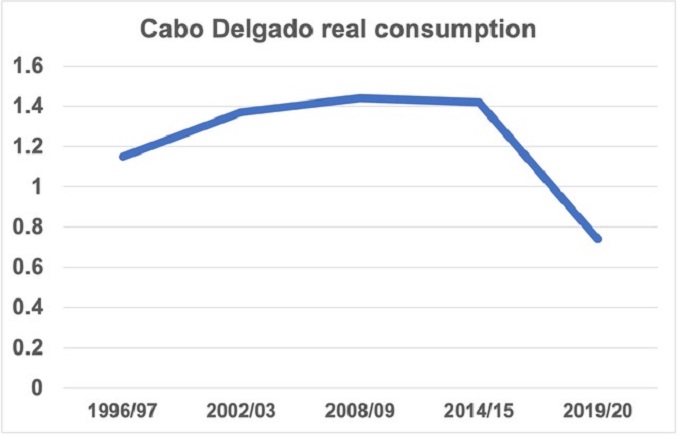
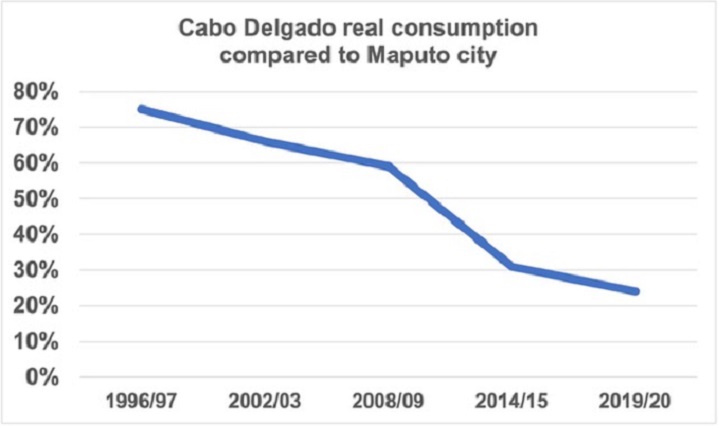

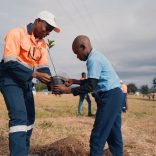

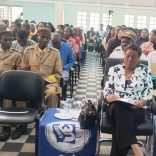
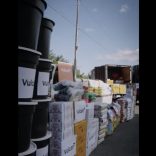

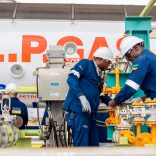

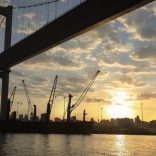
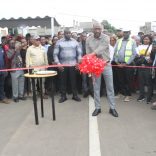
Leave a Reply
Be the First to Comment!
You must be logged in to post a comment.
You must be logged in to post a comment.